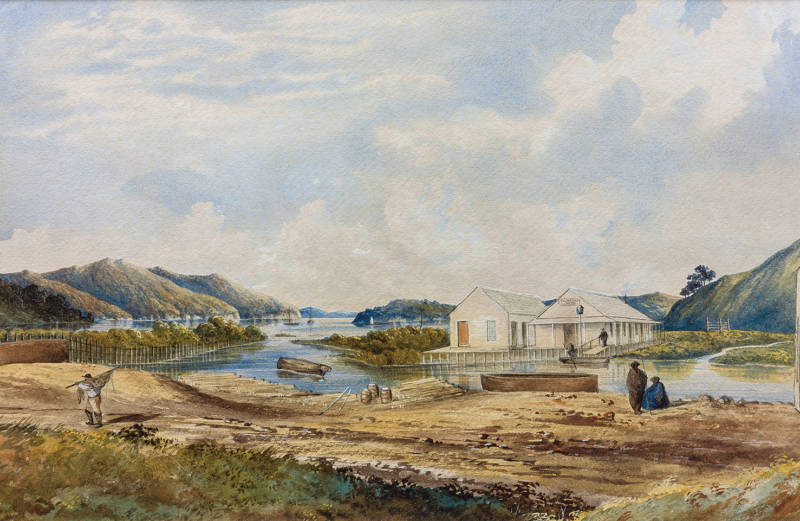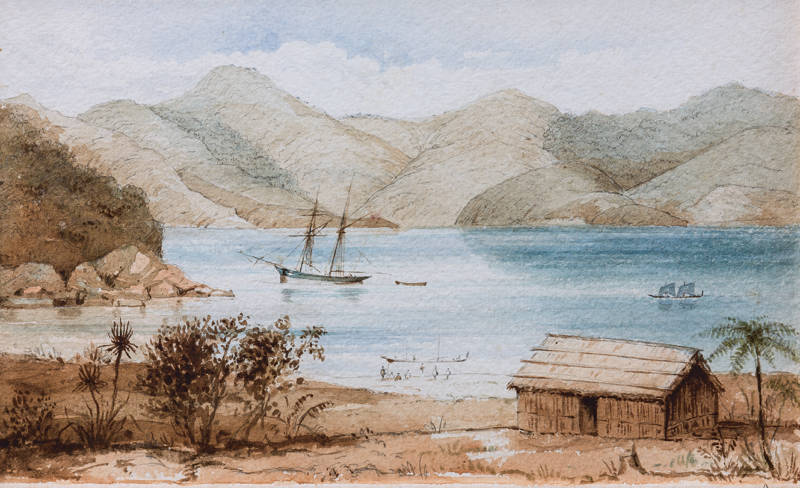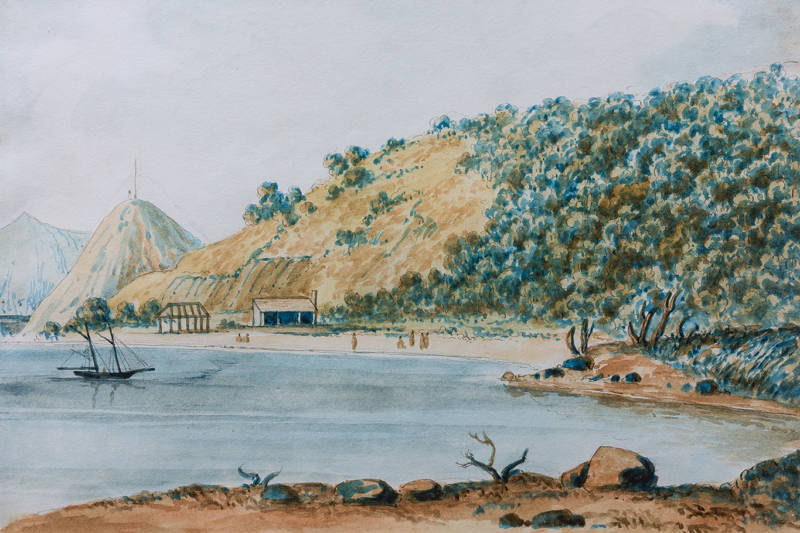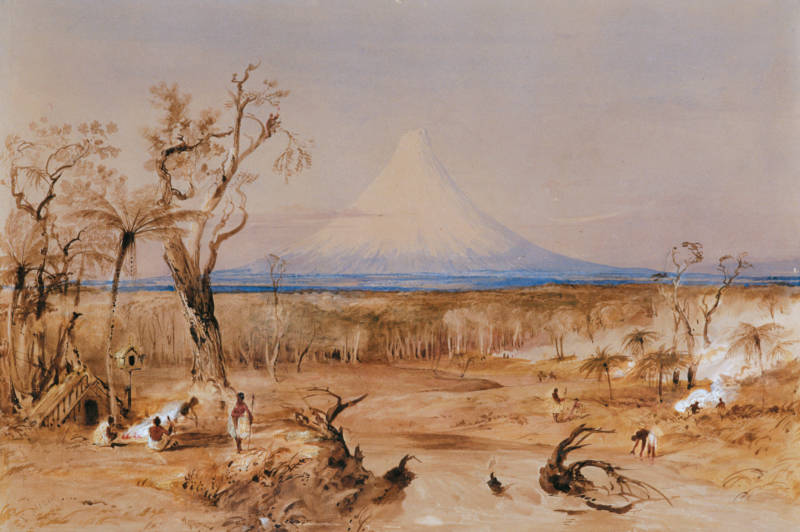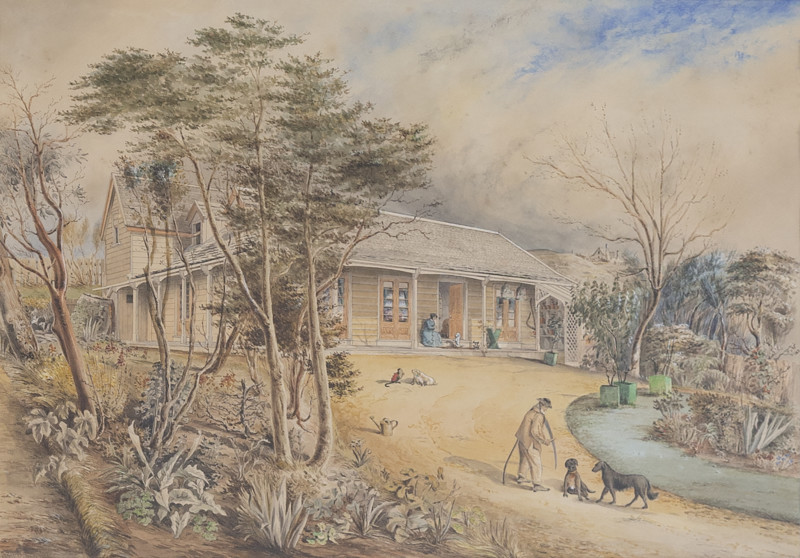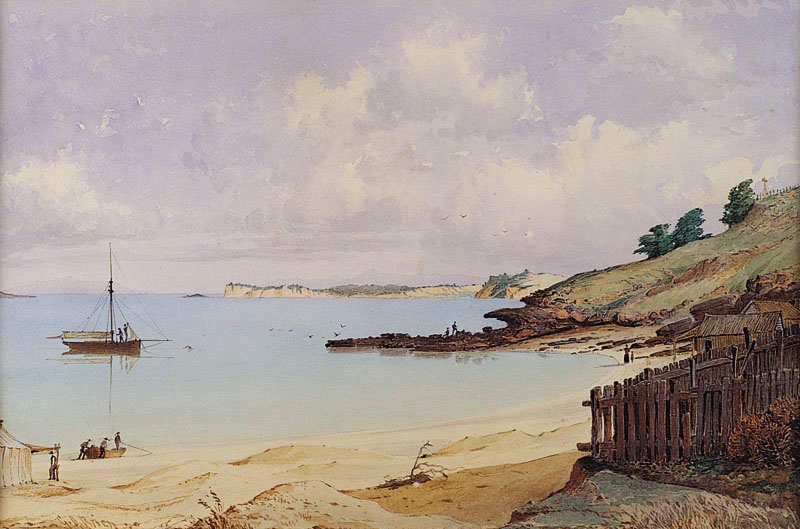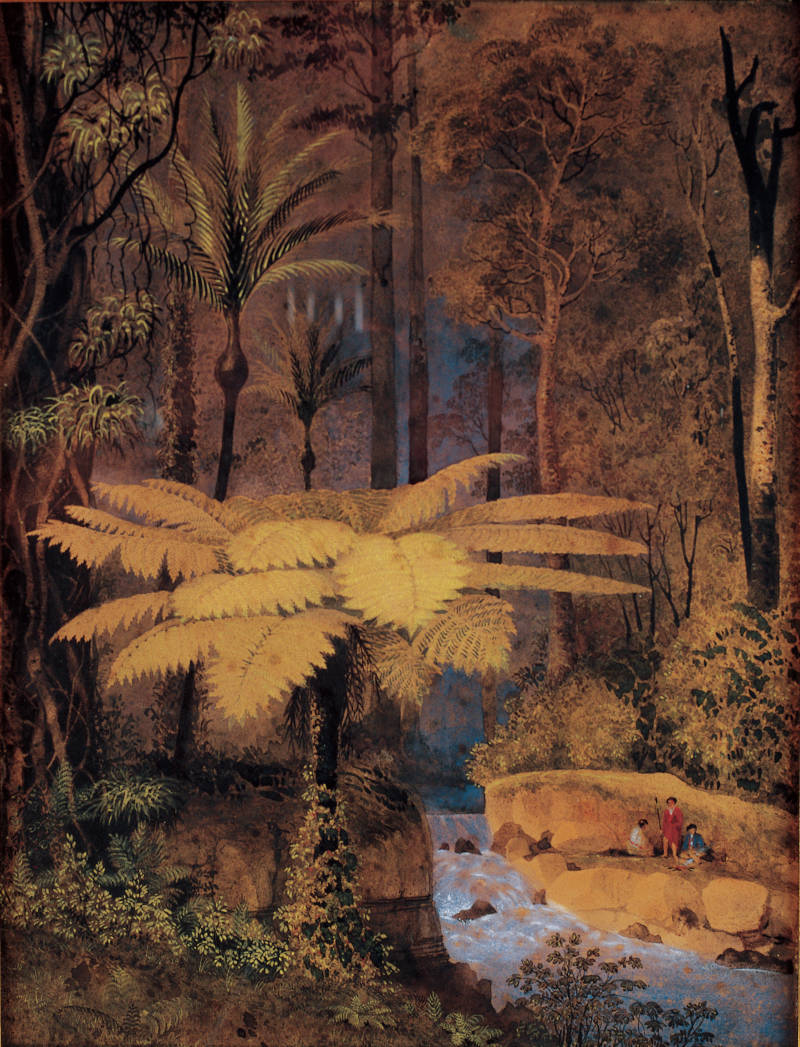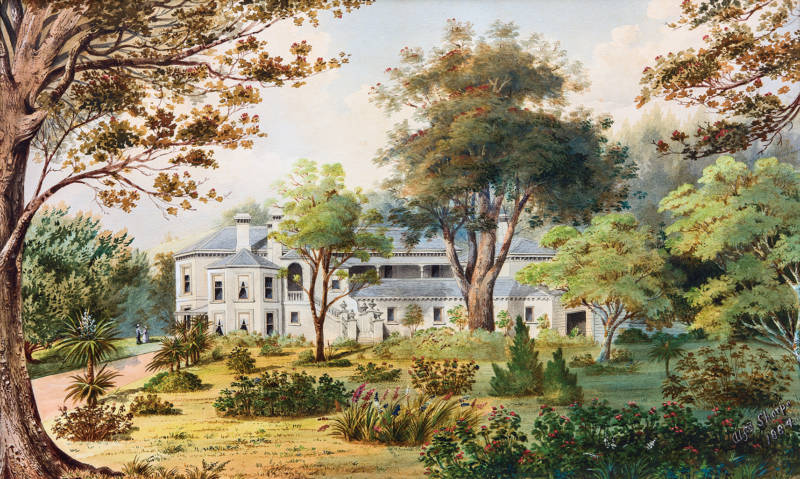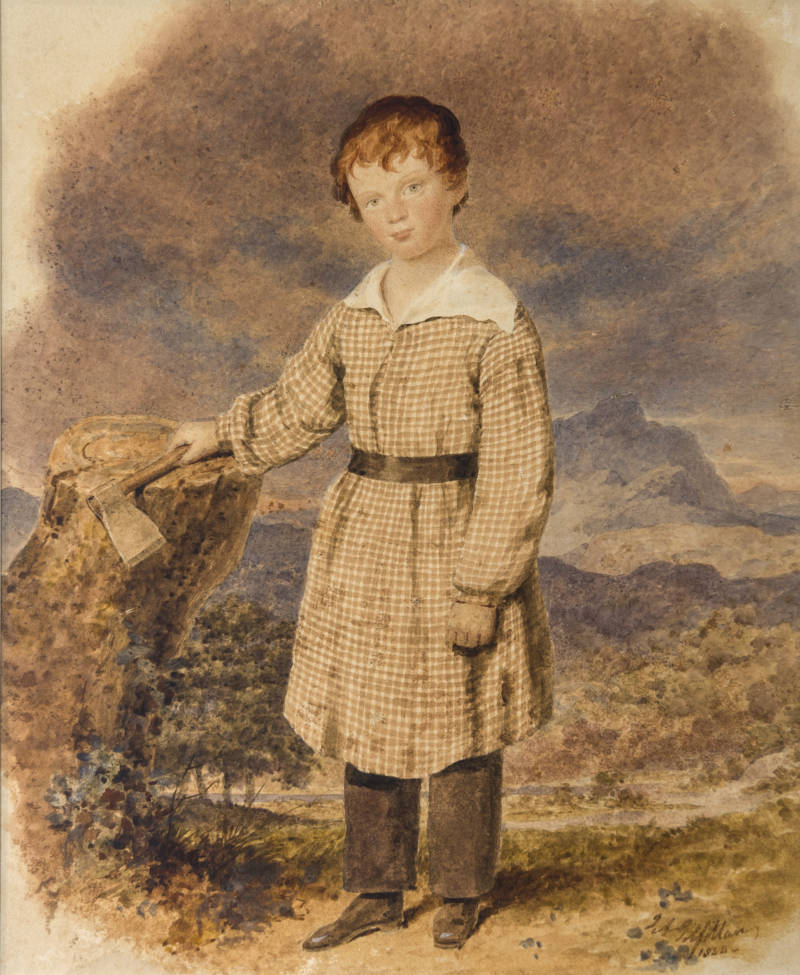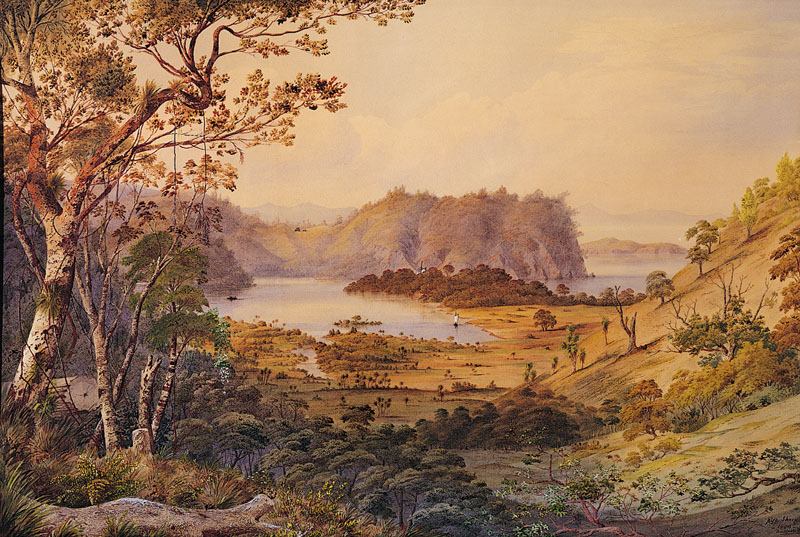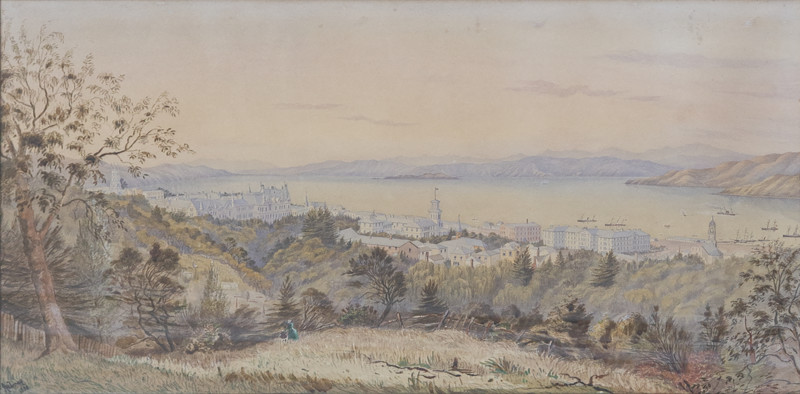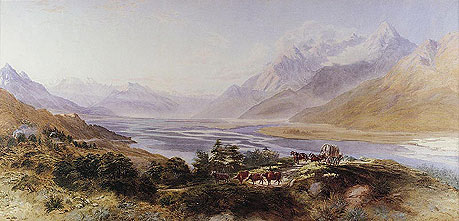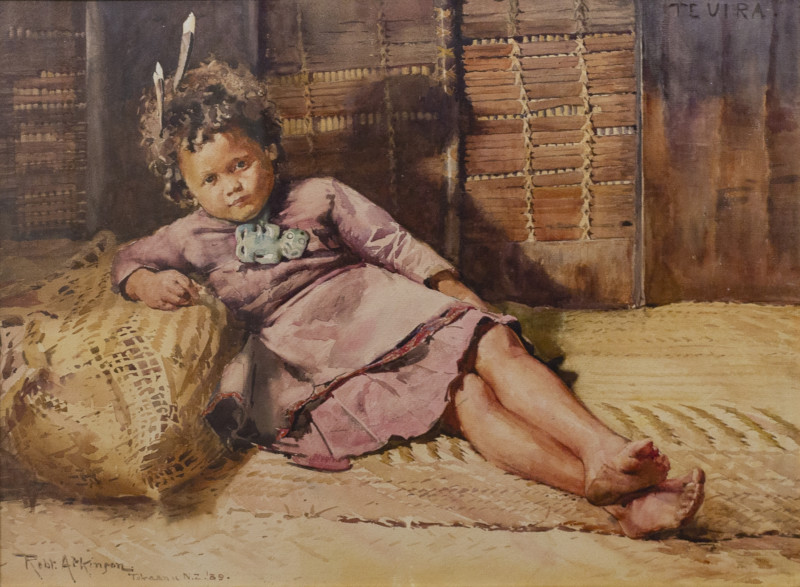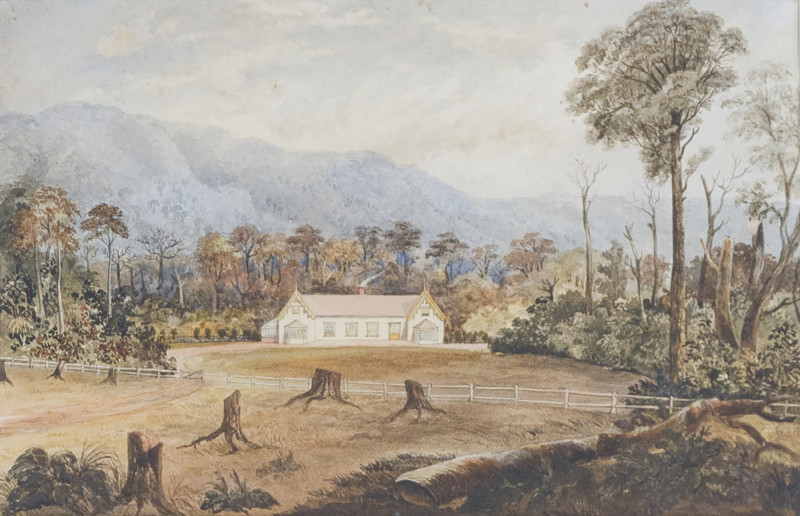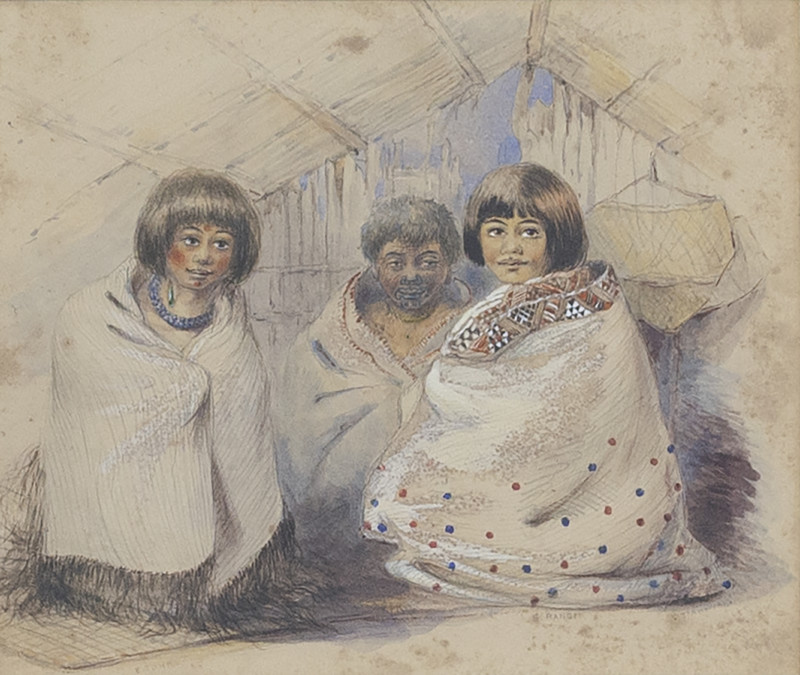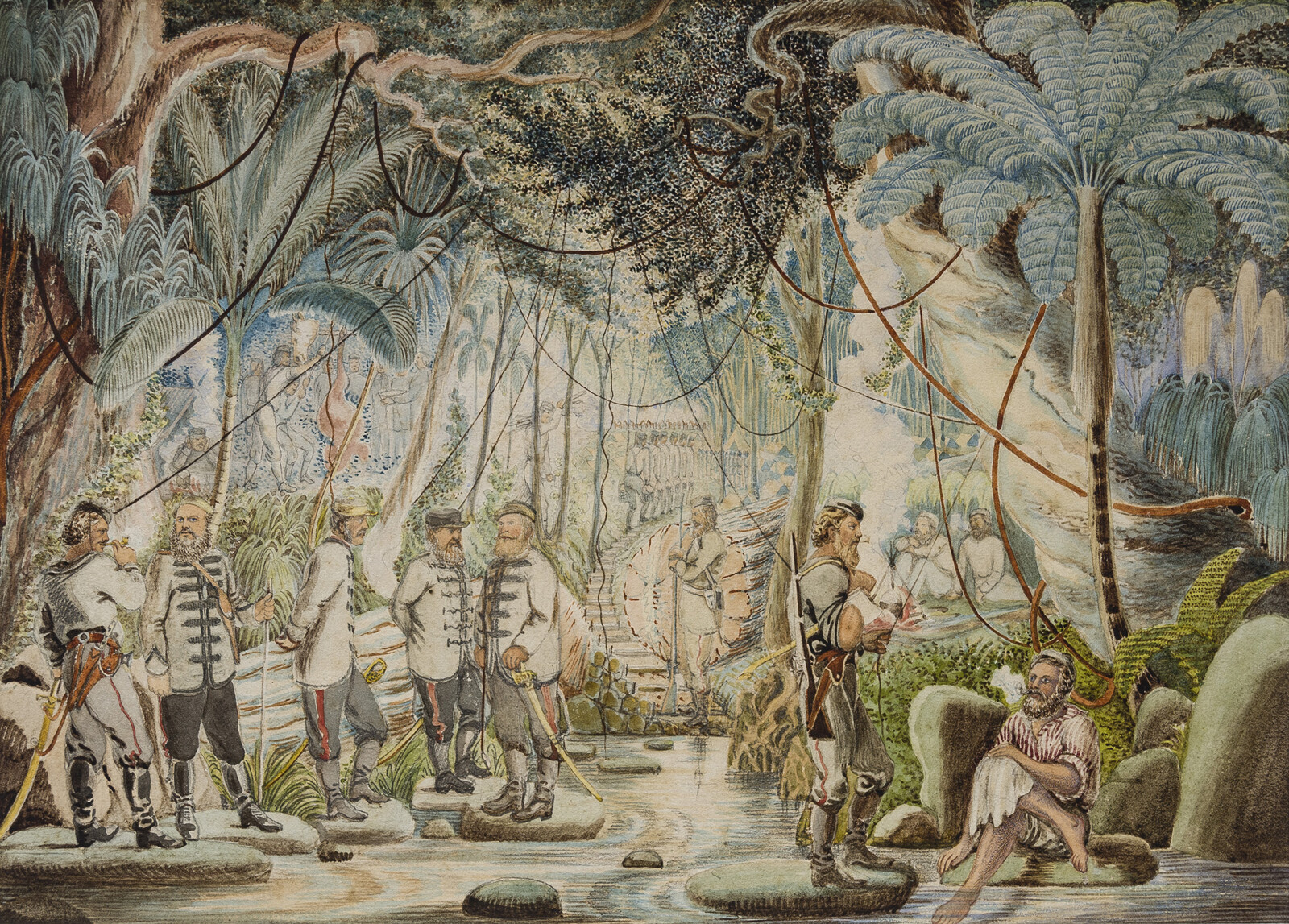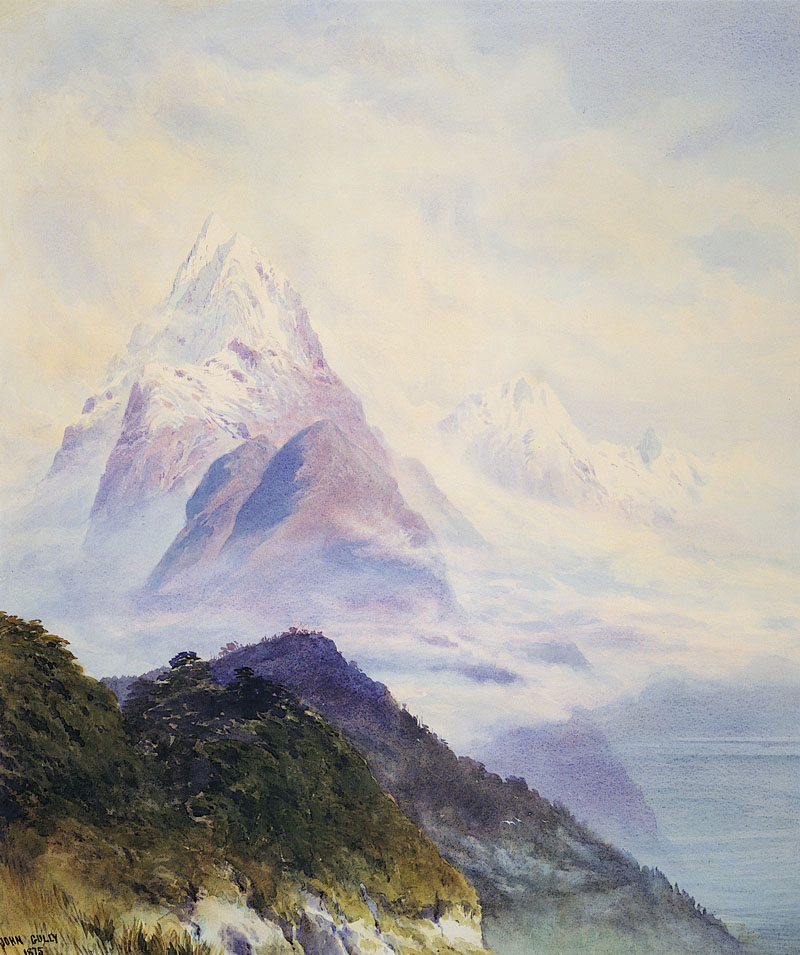
The Colonial
View
The first public viewing of a collection of 19th-century watercolours started in 1962
Curator’s Statement
This exhibition is the first public viewing of a collection of 19th-century watercolours started in 1962 when Sir James Fletcher and George Fraser purchased four works by J. B. C. Hoyte. Two of these are exhibited here. The Fletcher Collection, as it was soon known, consisted largely of historic paintings until 1967, when it was decided that, due to the growing interest shown by Fletcher staff, work by contemporary artists should also be added.
Under this expanded collecting policy, major paintings by Don Binney, Colin McCahon, and Gordon Walters were among the first to be purchased. This policy has not changed to the present time. Despite expansion, the collection, later known as the Fletcher Challenge Art Collection, never lost sight of its origins and continued to acquire historic New Zealand oil paintings, watercolours, and lithographs. A number of the works in this exhibition, Allom’s Mount Taranaki, Hoyte’s The Golden Crown (now, sadly, deaccessioned), and Igglesden’s Captain Sharp’s Residence were purchased in 2001.
The Fletcher Trust Collection now represents one of the largest and most complete collections of New Zealand art held outside a public gallery. It can no longer be surprising that an exhibition of such obviously beautiful paintings should also be controversial. In today’s climate, the word ‘colonial’ has negative connotations, associated as it is with suppression of indigenous culture, alienation of land, and loss of sovereignty.
Viewed from this position, these paintings represent an imposed view, albeit in most cases presented with immense skill. None of the artists whose work is included was born in Aotearoa; all were colonials, fondly looking back to their countries of origin and putting (in Francis Pound’s indispensable phrase) ‘frames on the land’ reflecting their artistic training in schools far distant.
The earliest paintings in the exhibition, Heaphy’s Whangaroa Harbour and Merrett’s Nagel’s Cove, record the familiar scene of arrival: a beach, some Māori and Pākehā figures, a small European boat, a raupō whare, the frame of what will be a cottage in the European style. In Francis Dillon Bell’s New Zealand Bush, the group of three Māori positioned on a rock beside a waterfall are passive bystanders in a painting whose subject is the accurate depiction of native foliage. George O’Brien’s Woodhaugh, Near Dunedin is observed with the sharp eye of a surveyor/draughtsman; in his precise topographical manner, he records the tidy division of land, the growth of breweries, and in the middle ground a European family come to look at its small flock of emus.
In both paintings, it is with a stranger’s eye that the artist views his subject: one dramatically but precisely recording unusual flora, the other showing a growing townscape in which the process of orderly settlement is proceeding. O’Brien’s Auckland, The North Head from Cheltenham Beach is a later work, produced after it was clear in the 1880s that tastes had changed and the romantic sublime manner of John Gully and William Mathew Hodgkins of the Otago Art Society was now preferred to the topographical subjects favoured by Hoyte and O’Brien.
Gully’s Mitre Peak is a magnificent example of his romantic sublime manner, reflecting his English background and training. The Bealey Valley, an unusually large work in this artist’s output, is noteworthy for the added interest provided by a coach and horses shown in the foreground. Even here, amid Gully’s mountain glory, the process of colonisation is felt. Then there is the little 1844 picture by John Alexander Gilfillan of his six-year-old son, John, holding a small axe, standing beside a tree stump with a mountainous landscape as background. Here, the juxtaposition of childhood innocence and two blatant symbols of colonisation is given added poignancy by the fact that three years later the child’s mother and three sisters were to be murdered by Māori at their farm settlement at Matarawa, near Petre (Whanganui), after which Gilfillan gave up the disputed property and moved to Sydney.
Maybe there is less innocence in Robert Atkinson’s Portrait of Te Uira Te Heuheu, another six-year-old, painted inside a whare at Tokaanu in 1889. The daughter of Te Heuheu Tukino V of Ngāti Tūwharetoa, Te Uira was destined to a life of political activism, living for many years in Wellington or at Waahi marae, near Huntly, where she was a devoted supporter of the Kīngitanga, a repository of much ancient Māori knowledge, and an accomplished musician and artist. This painting was sent by Atkinson to the Royal Academy where it was exhibited for sale in 1891. In 1986, it surfaced again in an auction catalogue and was repatriated.
Von Tempsky’s Encampment of the Forest Rangers tells yet another colonial story—one of disaster, despite the relaxed stage set depicted. It records an event following the devastation in 1865 by Imperial troops of the South Taranaki territory belonging to tribes loyal to Te Ua Haumēne, who opposed the alienation of Māori land by confiscation. The watercolour records a single incident in what should have been a trouble-free 60-mile march from South Taranaki back to a triumphal entry into Ngāmotu New Plymouth. The force was hampered by ceaseless rain and ran out of supplies resulting in the eating of pack horses and the necessity of a supply party being sent from North Taranaki.
It is likely that von Tempsky made this painting in 1866, by which time his military career was in temporary recess and he was in financial difficulties. He gifted it to Assistant Surgeon William Manley, with whom he has shown himself, dressed in typical swashbuckling style, in conversation on the left of the painting. Von Tempsky’s unashamedly propagandistic painting of a military embarrassment is but one example of the way in which colonial artists fashioned a view not only of the landscape, making it seem attractively exotic to colonists, but also of political events. Of course, the intention behind such a work as J. C. Richmond’s West Coast, South Island is more obviously painterly than political, although the two are undeniably linked, in hindsight. The appropriation of the landscape by these artists is one small aspect of the social and political revolution that occurred in New Zealand during the early period of colonisation.
—Peter Shaw, Curator
